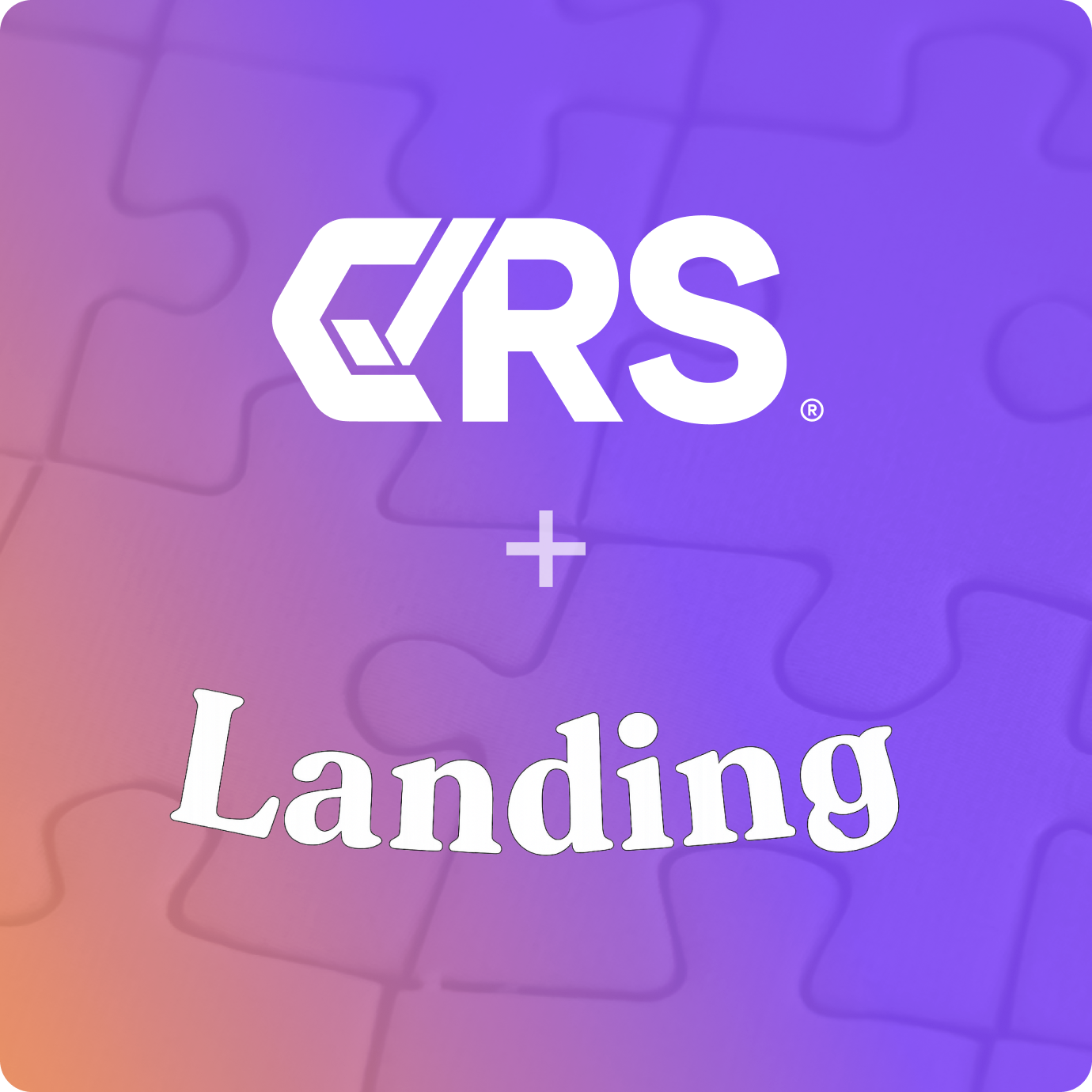Automated SMB loan underwriting leverages real-time business credit data and API integrations to accelerate lending decisions while reducing risk. Modern underwriting platforms connect directly to commercial credit bureaus, bank transaction feeds, and alternative data sources to evaluate cash flow, payment history, and industry benchmarks in seconds rather than days. The best tools for this process include CRS’s Business Credit API, which delivers Experian, Equifax, and D&B reports in a single call, alongside specialized platforms like Plaid for transaction analysis and Ocrolus for document verification. For merchant cash advance providers, prioritize APIs that surface daily receivables data and real-time risk scores to support frequent, small-dollar decisioning.
Why Traditional SMB Underwriting Fails in 2025
Manual underwriting processes create bottlenecks that cost lenders both speed and accuracy. The average small business loan application takes 25 to 30 days to process using legacy methods, according to the Federal Reserve’s Small Business Credit Survey. During that window, applicants often accept competing offers or abandon the process entirely.
Traditional workflows rely on static documents like tax returns and bank statements that are weeks or months out of date by the time underwriters review them. This lag introduces material risk, especially in industries with volatile cash flows or seasonal revenue patterns. Lenders also face operational costs averaging $2,500 to $5,000 per manual underwriting decision when factoring in staff time, compliance checks, and document handling.
The rise of fintech competitors has reset borrower expectations. Small business owners now expect instant pre-approvals and same-day funding, mirroring the consumer lending experience. Lenders using manual processes lose market share to platforms that deliver decisions in under 60 seconds.
Core Components of Automated Underwriting Infrastructure
Real-Time Business Credit Data Integration
Automated underwriting begins with direct access to commercial credit bureaus. CRS’s Business Credit API aggregates reports from Experian, Equifax, and Dun & Bradstreet through a single endpoint, eliminating the need for multiple vendor relationships. The API returns tradeline history, payment trends, public records, and commercial credit scores in under three seconds.
Real-time credit pulls reveal current liabilities, recent inquiries, and days-beyond-terms metrics that static reports miss. For merchant cash advance underwriting, this data identifies borrowers already over-leveraged or showing early signs of distress. Lenders configure score thresholds and tradeline filters directly in the API call, automating initial credit screening without human review.
Bank Transaction Analysis and Cash Flow Modeling
Open banking APIs like Plaid and Finicity connect directly to business checking accounts to extract transaction-level data. Automated systems parse deposits, withdrawals, and recurring payments to calculate daily cash flow volatility, average account balances, and revenue consistency.
Machine learning models trained on millions of SMB transactions identify income sources, categorize expenses, and flag anomalies like sudden deposit spikes or NSF patterns. These insights feed directly into debt-service coverage ratio calculations and repayment capacity models. For revenue-based financing products, transaction data enables dynamic underwriting that adjusts loan amounts based on trailing 30-day receivables rather than annual projections.
Document Verification and Data Extraction
Optical character recognition platforms like Ocrolus and Inscribe automate the extraction of financial data from PDFs and images. Underwriters upload bank statements, tax returns, and invoices, and the system returns structured JSON with parsed figures, detected alterations, and confidence scores.
Automated document verification reduces fraud risk by cross-referencing extracted data against credit bureau records and bank transaction feeds. Systems flag inconsistencies like mismatched revenue figures or altered dates in real time, triggering manual review queues only for high-risk applications.
Alternative Data Sources for Thin-File Borrowers
Startups and newer businesses often lack sufficient credit history for traditional underwriting. Alternative data APIs fill this gap by surfacing payment behavior from non-traditional sources. CRS integrates trade payment data from suppliers and vendors, utility payment history, and business registration records to build credit profiles for thin-file applicants.
Platforms like Enigma and Middesk provide real-time business verification, confirming entity status, ownership structures, and operating licenses. This data prevents identity fraud and ensures borrowers meet basic eligibility requirements before deeper underwriting begins.
Step-by-Step Implementation Guide
Phase 1: API Selection and Integration Architecture
Start by mapping your underwriting criteria to available data sources. Lenders focused on equipment financing prioritize asset verification and collateral valuation APIs, while working capital providers emphasize cash flow and receivables data.
Select a primary business credit API that covers all three major bureaus. CRS’s platform offers pre-built connectors for loan origination systems like Salesforce, nCino, and Blend, reducing integration time to under two weeks. Configure webhook listeners to receive real-time updates when credit reports refresh or new public records appear.
For bank transaction analysis, choose between aggregator APIs like Plaid or direct bank integrations via FDX standards. Aggregators offer faster deployment but may face connectivity issues with regional banks. Direct integrations provide more reliable data but require individual bank partnerships.
Phase 2: Decision Engine Configuration
Modern underwriting platforms use rule engines and machine learning models to automate credit decisions. Define your initial approval matrix using hard stops like minimum credit scores, maximum debt-to-income ratios, and required time-in-business thresholds.
Layer in soft factors that adjust loan terms rather than triggering outright declines. For example, borrowers with strong cash flow but limited credit history might qualify for smaller initial advances with shorter repayment terms. Configure your decision engine to calculate these adjustments automatically based on weighted risk factors.
Test decision logic against historical loan performance data to calibrate approval rates and default predictions. Most lenders target 70-80% straight-through processing rates, meaning seven to eight out of ten applications receive automated decisions without manual review.
Phase 3: Compliance and Audit Trail Automation
Automated underwriting must maintain complete audit trails for regulatory compliance. Configure your system to log every data pull, decision factor, and model output with timestamps and user attribution. This documentation proves fair lending compliance and supports internal quality control reviews.
Implement adverse action automation that generates compliant denial notices citing specific reasons tied to FCRA requirements. Systems should reference exact credit report data points or cash flow metrics that triggered the decline, not generic risk scores.
For ECOA compliance, monitor approval rates across protected classes and configure alerts when disparities exceed tolerance thresholds. Automated compliance dashboards surface these patterns in real time, enabling proactive policy adjustments before regulatory issues arise.
Optimizing for Merchant Cash Advance Underwriting
Merchant cash advance providers face unique underwriting challenges due to daily remittance structures and higher risk profiles. Automated systems for MCA underwriting prioritize speed and receivables visibility over traditional creditworthiness metrics.
The best API for MCA underwriting combines real-time merchant processing data with business credit overlays. Platforms like Lendflow and Amount integrate directly with payment processors like Square, Stripe, and Clover to pull daily sales volumes, average transaction sizes, and chargeback rates. This data feeds underwriting models that calculate sustainable holdback percentages and maximum advance amounts based on trailing receivables.
CRS’s Business Credit API enhances MCA decisioning by surfacing existing merchant cash advance obligations reported to commercial bureaus. Many MCA borrowers stack multiple advances, creating hidden leverage that processing data alone won’t reveal. Automated systems cross-reference new applications against existing tradelines to calculate true debt service burdens and prevent over-advancing.
Configure your MCA decision engine to weight recent sales trends more heavily than historical averages. A restaurant showing 40% revenue declines over 30 days presents higher risk than one with stable monthly volumes, even if annual figures remain strong. Machine learning models trained on MCA portfolio performance can detect these early warning signals and adjust approval criteria dynamically.
Measuring ROI and Performance Metrics
Track four key metrics to evaluate automated underwriting effectiveness. Decision speed measures the time from application submission to credit decision, with best-in-class systems averaging under 90 seconds. Straight-through processing rate indicates the percentage of applications decided without manual review, targeting 70-80% for most SMB portfolios.
Portfolio performance metrics compare default rates and loss severity across automated versus manual decisions. Well-calibrated systems should match or outperform manual underwriting quality while processing 10x more volume. Monitor these metrics by loan size, industry, and credit tier to identify model weaknesses requiring recalibration.
Operational efficiency gains appear in cost-per-decision reductions and staff redeployment. Lenders typically see 60-70% decreases in underwriting costs within six months of automation, with staff shifting from document review to exception handling and portfolio monitoring.
Common Implementation Pitfalls and Solutions
Over-reliance on credit scores creates unnecessary declines among cash-flow-strong borrowers with limited credit history. Balance bureau data with transaction analysis and alternative data to capture more approvals without increasing risk.
Insufficient testing against edge cases leads to production errors and poor borrower experiences. Simulate applications with missing data fields, inconsistent document formats, and unusual business structures during UAT to ensure graceful error handling.
Neglecting model monitoring causes performance drift as economic conditions and borrower behavior evolve. Schedule quarterly model reviews comparing predicted versus actual default rates, and retrain algorithms when accuracy degrades beyond tolerance thresholds.
Poor API error handling creates system downtime and incomplete underwriting decisions. Implement fallback logic that queues applications for manual review when data sources are unavailable rather than rejecting them outright.
Future-Proofing Your Underwriting Stack
The next generation of automated underwriting will incorporate real-time business performance data from accounting platforms like QuickBooks and Xero. API partnerships with these providers enable continuous monitoring of revenue, expenses, and working capital ratios throughout the loan lifecycle, not just at origination.
Embedded lending integrations will push underwriting decisions directly into vertical software platforms serving specific industries. A construction management platform might offer equipment financing at the point of invoice creation, with underwriting happening invisibly in the background using CRS credit data and project payment history.
Explainable AI requirements will force greater transparency in automated decisions. Lenders must be able to articulate exactly which data points and model factors drove each credit decision, moving beyond black-box algorithms toward interpretable decision trees and factor-based scoring.
Regulatory frameworks around automated lending continue to evolve, with increased scrutiny on algorithmic bias and fair lending compliance. Build flexibility into your decision engine to accommodate new data requirements and testing protocols as standards emerge.










